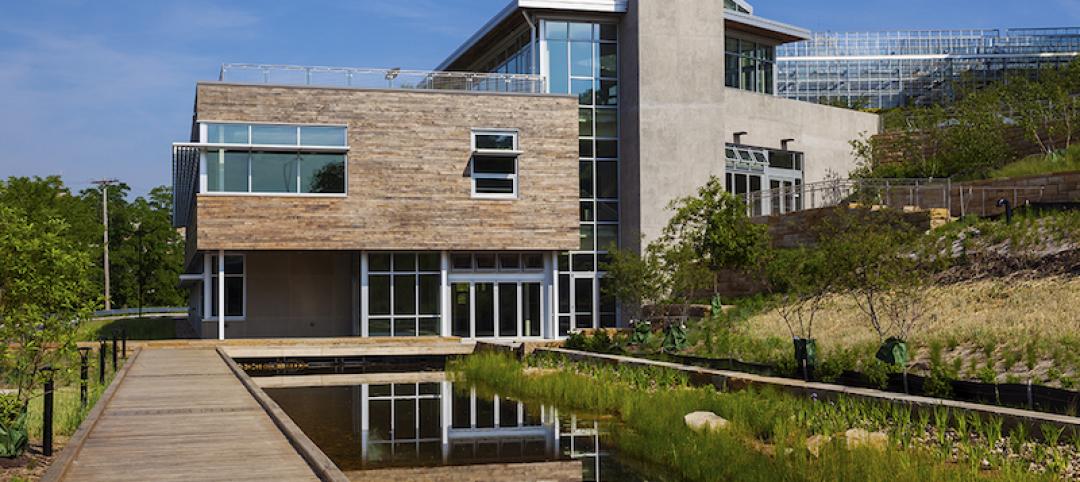To some project teams, “daylighting” means using glass area to admit direct sunlight, period. Yet there are better approaches to illuminating building interiors. Often, the sun’s direct rays are the last thing you need for effective daylighting.
Sunlight comes with high solar heat gain—measured as solar heat gain coefficient (SHGC) for various types of glazing and translucent materials—and can lead to glare, occupant thermal discomfort, and material degradation caused by ultraviolet (UV) light.
Building occupants and owners want useful, uniform light, not high-contrast or high-heat sources, according to surveys like the seminal study led by the University of Washington (https://tinyurl.com/zhpx7h3). That’s why controlled and redirected sunlight almost always provides the best approach, while direct rays may be counted among the least desirable techniques.
Building surfaces and enclosures receiving direct sunlight need solar control systems, including shading devices such as overhangs and fins that may be opaque or translucent, solid or louvered, according to the Best Practices Manual published by the Collaborative for
High Performance Schools. Canopies, window films, and insulated glazing units (IGUs) with internal louvers may also be required. Façades and areas facing north, on the other hand, need ways to maximize daylight harvest.
After reading this article, you should be able to:
+ Discuss the benefits and ideal kinds of daylighting illumination desired for such interiors as workplaces, libraries, and museums.
+ Describe the types of enclosure technologies and wholebuilding design approaches for maximizing beneficial daylighting.
+ List techniques for improving daylighting performance.
+ Compare the methods or materials commonly used in daylighting applications.
TAKE THIS FREE AIA COURSE AT BDCUNIVERSITY.COM
Related Stories
Daylighting | Nov 13, 2020
5 tips when designing for daylight
Daylight modeling is a tool to examine how daylight interacts with a building, and how that natural light behaves within interior spaces.
Government Buildings | Sep 14, 2020
Latest addition to Fermilab campus about to begin construction
Lots of natural light and hybrid labs will distinguish the new Integrated Engineering Research Center.
75 Top Building Products | Dec 16, 2019
101 Top Products for 2019
Building Design+Construction readers and editors select their top building products for the past 12 months in the fourth-annual 101 Top Products report.
75 Top Building Products | Dec 16, 2019
Top Building Systems Products for 2019
FabricAir’s ceiling-hung fabric duct and Ellumi Lighting’s bacteria-killing lights are among the 13 new building systems products to make Building Design+Construction's 2019 101 Top Products report.
Office Buildings | Sep 3, 2019
A new HOK report focuses on designing offices for a neurodiverse workforce
Emphasizing inclusion and choice is a key component.
Office Buildings | Jul 25, 2018
New study on occupant comfort advances Saint Gobain’s design approach for renovation and new construction
The building products giant gauges its employees’ perceptions of old and new headquarters environments.
Sponsored | | May 29, 2018
Accelerate Live! sponsor talk: Debunking daylight myths
In this 10-minute talk at BD+C’s Accelerate Live! conference (May 10, 2018, Chicago), SageGlass CEO Alan McLenaghan, PhD, debunks four common myths related to daylighting in commercial and institutional buildings.
Daylighting | Jan 17, 2018
Product roundup: 12 daylighting technologies
Phatom 5000 from Tubelite, SolaMaster 300 from Solatube, and Fallbrook XL Series from C.R. Laurence are just three of the 12 products highlighted in BD+C's January Product Roundup.
| Jun 13, 2017
Accelerate Live! talk: Work in progress—How the office environment drives innovation, SageGlass (sponsored)
SageGlass CEO Dr. Alan McLenaghan reviews how biophilic design and new technologies, such as dynamic glass, create a greater connection between the built and natural environments in the office.


![Sun, sky brightness, and glow: Making the most of daylight [AIA course] Sun, sky brightness, and glow: Making the most of daylight [AIA course]](/sites/default/files/datylight.jpg)










